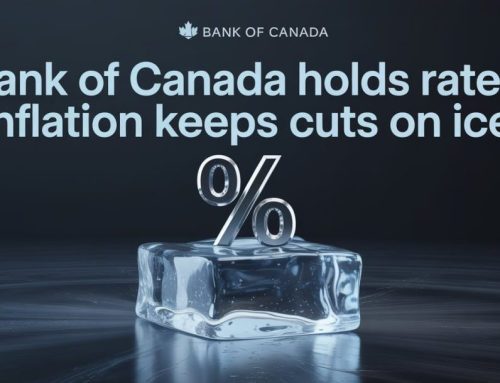In a world where there is no shortage of economic uncertainty, choosing the right term length can be like trying to pick the winning lottery numbers. We’re all on the hunt for the lowest mortgage rates as we all have a common goal: To save as much money as possible. But the lowest mortgage rate isn’t necessarily going to save you the most money over time. If it were, then everyone would be going with 5 year fixed terms as they carry the lowest mortgage rates.
But as mortgage rates are widely expected to drop substantially over the next few years, the majority of mortgage shoppers are gravitating toward shorter term fixed rate mortgages.
However, the shorter the term, the higher the rate, which can make the decision all that much more challenging.
The question is…. What are the odds that you’ll overcome the additional cost involved with a shorter term mortgage in hopes of lower rates to come?
3 Things to Consider When Choosing a Short-Term Mortgage
Shorter term mortgages have been more popular due to anticipated rate decreases expected over the next few years. While shorter terms typically have higher rates than the 5 year alternatives, the idea is that you’ll pay a higher rate now with the expectation of benefiting from lower rates when your mortgage comes up for renewal. This would ultimately save you more money in the long run.
But is this strategy always pan out?
Many will choose a specific term without thoroughly analyzing the available options. There are three key factors to consider before making your choice:
- Additional cost
- Break-Even Rate
- Future Rate Predictions
Additional Cost
As shorter-term fixed mortgages come with higher rates, they will be more costly over the initial term when compared with the lower, 5 year fixed mortgages.
Break-Even Rate
Once you have determined the additional cost of the higher rate over the shorter term, you’ll then need to determine your break-even rate. This where the rate will need to be at the end of the shorter term for the two options to be equal in cost. Think of it as balancing the difference between the two terms. For example, when comparing a two year and a three year rate, the break-even point would be based on a one year term because it fills the gap between the two terms.
Future Rate Predictions
Ahh, the crystal ball moment! Predicting where rates will land at the end of your term is like trying to guess the weather a year from now.
When will these rates take a dip, and by how much?
Much of it hinges on how well the Bank of Canada chases down its 2% inflation target. For the shorter term to be a win, rates need to end up below our break-even marker. Otherwise, the longer term with the lower rate would have been the better choice.
This is where we need to rely on economists and their forecasts.
Current Rate Forecasts from the Big Six Banks
Economists will release predictions on when they think the Bank of Canada will start cutting their rate and by how much. Just as anyone else, they can only go based on the information they have available to them as of today. Forecasts are predictions, which can and do change.
One major event can radically change the forecasts. The war in Ukraine was the perfect example of this. In early 2022, it was expected that the Bank of Canada would increase their rate by 1.00% to 1.25% by the end of 2022. Instead, we saw it increase 4.00%, with another 0.75% in 2023. A whopping 4.75% in total. Even the Bank of Canada themselves had no idea that was coming.
While the forecasts can be wrong, they are all we have to go on. Below are the current rate forecasts from the big six banks:
| BANK | 2023 | 2024 | TOTAL | |||
| Q4 | Q1 | Q2 | Q3 | Q4 | ||
| BMO | N/C | N/C | N/C | -0.25% | -0.25% | -0.50% |
| NATIONAL | N/C | N/C | -0.25% | -0.50% | -0.25% | -1.00% |
| CIBC | N/C | N/C | -0.50% | -0.50% | -0.50% | -1.50% |
| RBC | N/C | N/C | N/C | -0.50% | -0.50% | -1.00% |
| SCOTIABANK | N/C | N/C | -0.25% | -0.50% | -0.50% | -1.25% |
| TD | N/C | N/C | -0.50% | -0.50 | -0.50% | -1.50% |
The rate cuts are then expected to continue into 2025.
These are the forecasts today. They can and will change as we progress. Earlier in the year, there were some forecasts calling for the cuts to start as early as the third quarter of 2023. As you can see, they were way off. Which leads us to the question:
What are the odds that the above forecasts are accurate?
Only time will tell.
There is also no guarantee that the prime rate won’t increase further. While there are no further rate hikes expected in this cycle, the Bank of Canada has made it clear that they will hike further if needed.
Mortgage Term Length Options
The mortgage term is the period in which your mortgage contract is valid for. If you choose a 5 year fixed term for example, then your mortgage contract with that lender expires at the end of five years. At that point, you have three options:
- Renew your mortgage with the same lender.
- Transfer your mortgage to a different lender.
- Pay the mortgage off in full.
Most people will of course fall into the first or second category. While sometimes it makes sense to renew with your current lender, there is often huge savings to be found by transferring your mortgage to another lender, which is an area where the Paul Meredith Team excels.
You can read more about this in my blogs on Everything You Need to Know About Mortgage Renewals and How To Maximize Your Savings at Renewal.
Lowest Mortgage Rates and Cost Analysis on Various Terms
Below are the lowest mortgage rates* for owner-occupied properties on terms of 1-5 years. As mortgage rates can vary depending on your situation, I’ve given a range from lowest to highest.
I’ll then follow with the cost difference and break-even rates. I’ll be using a $500,000 mortgage with a 25 year amortization for all examples:
1 year fixed – 6.79% – 7.24%
Though there’s a good chance that fixed rates may decrease after a year, it’s far from certain. Predictions about the Bank of Canada’s rate reductions keep getting delayed. Current projections suggest that while rates might be lower in a year, they might not drop sufficiently to compensate for the considerable upcharge of a 1-year fixed term. It’s also possible that after paying a significant premium for a 1 year term, you might discover the rates have not changed… or even worse, they’ve risen.
2 year fixed – 6.44% to 6.94%
As you can see, 2 year fixed rates are between 0.30% to 0.35% lower than the 1 year fixed options. But two years may still not be enough time to navigate the uncertainties surrounding the future of rates.
Cost difference between the 6.79% 1 year and 6.44% 2 year:
$1,741.47 after one year.
Break-even rate:
6.06%
This means that the 1 year fixed rate (to match the 2 year comparison term) would need to come down by 0.73% at the end of the one year term for you to break even between the two options.
3 year fixed – 5.79% to 6.34%
Rates are substantially lower when we move up to a 3 year term. A whopping 0.60% to 0.65% lower. This is why 3 year fixed terms have been the most popular. They have the right combination of lower rate and shorter term which makes them an attractive choice.
Cost difference between the 6.44% 2 year and 5.79% 3 year:
$6,591.71 after two years.
Break even rate:
4.34%
In other words, you’ll need to make up the $6,591.71 cost difference at the end of two years which would require the 1 year rate to be 4.34% at that time. If it’s lower, then you come out ahead. This means that the 1 year rate would need to fall by 2.45% after two years…just to break even.
While it’s possible that the rates could be this low after that time, it’s a long way for them to drop. Most people find themselves choosing the 3 year fixed term in this situation.
4 year fixed – 5.84% to 6.19%
The lowest 4 year fixed rate is actually higher than the 3 year on insured mortgages, which makes the shorter term the clear winner without even having to do any math. For that reason, I’ll use the higher uninsurable rates for this comparison.
Cost difference between the 6.34% 3 year and 6.19% 4 year:
$2,340.31 after the third year.
Break-even rate:
5.66%
Given the small difference, the 3 year fixed is the clear winner in this situation.
5 year fixed – 5.54% to 6.04%
In this case, I’ll compare the 5 year with the 3 year given that the 4 year rate is not something that I would consider in today’s market.
Cost difference between 5.54% and 5.79%:
$3,864.69 over three years.
Break even rate:
5.09%
This means the 2 year fixed rate would need to fall by 1.36% after three years to hit your break even rate. As rates are expected to fall by more than this, your best chance at long term savings would be to go for the 3 year fixed at the higher rate.
What About Variable Rate Mortgages?
Earlier in the year, variable rate mortgages carried a premium of greater than 1% over their fixed rate alternatives. That was a very steep price to pay and the Bank of Canada would have needed to start cutting their rate within months for you to even have a chance of seeing the sunny side of that deal. The larger the spread, the deeper the hole you dig while you wait for rates to tumble.
As of now, the spread has narrowed. The lowest variable rates range from prime -1.30% (currently 5.90%) to prime -0.50% (currently 6.70%), depending on your situation.
While the thought of a variable rate mortgage might make some people feel like they just ate some expired sushi, they will eventually start to become popular once again. It’s possible that you could come out ahead with variable if the current forecasts remain on track. But that is a big ‘IF’. Relying on these forecasts can feel like you’re trusting your cat to guard your fish tank. This is why most people who would normally choose variable rates are now opting for shorter term fixed rates.
I’ll be discussing variable rate mortgages in today’s market in more detail in a future blog. Make sure you’re subscribed to my blog to receive all the updates so you don’t miss a beat!
Conclusion
No one can predict the future, so no one knows for sure how things are going to unfold. Yes, rates will eventually start to fall. But that revolves around the Bank of Canada achieving its 2.00% inflation goal. And there is still a big fluffy ‘when’ cloud hovering over that forecast.
After a couple of years, you might be thinking ‘thank God I chose a 2 year term!’
Or ‘I should have gone with the 5 year!”
It’s always easy to make that call once you know the outcome. But as the future is unknown, you can only make your decision based on today’s forecasts…and then hope for the best.
Making the right choice can be a tough decision, so you have to go with what you think would be best for you. Remember, you’re not alone in this journey. As a client of the Paul Meredith Team, we’ll be figuratively by your side, offering you the guidance you need… every step of the way.
* The lowest rates listed are largely for high-ratio mortgages (purchases with less than 20% down payment). The rates on the higher end of the spectrum are for uninsurable mortgages (30 year amortization, refinances, purchases over $1 million). The lowest rates can vary, and can fall anywhere within the ranges listed below. I explain the reasoning for this in my blog on Why Different People are Quoted Different Rates








Leave A Comment